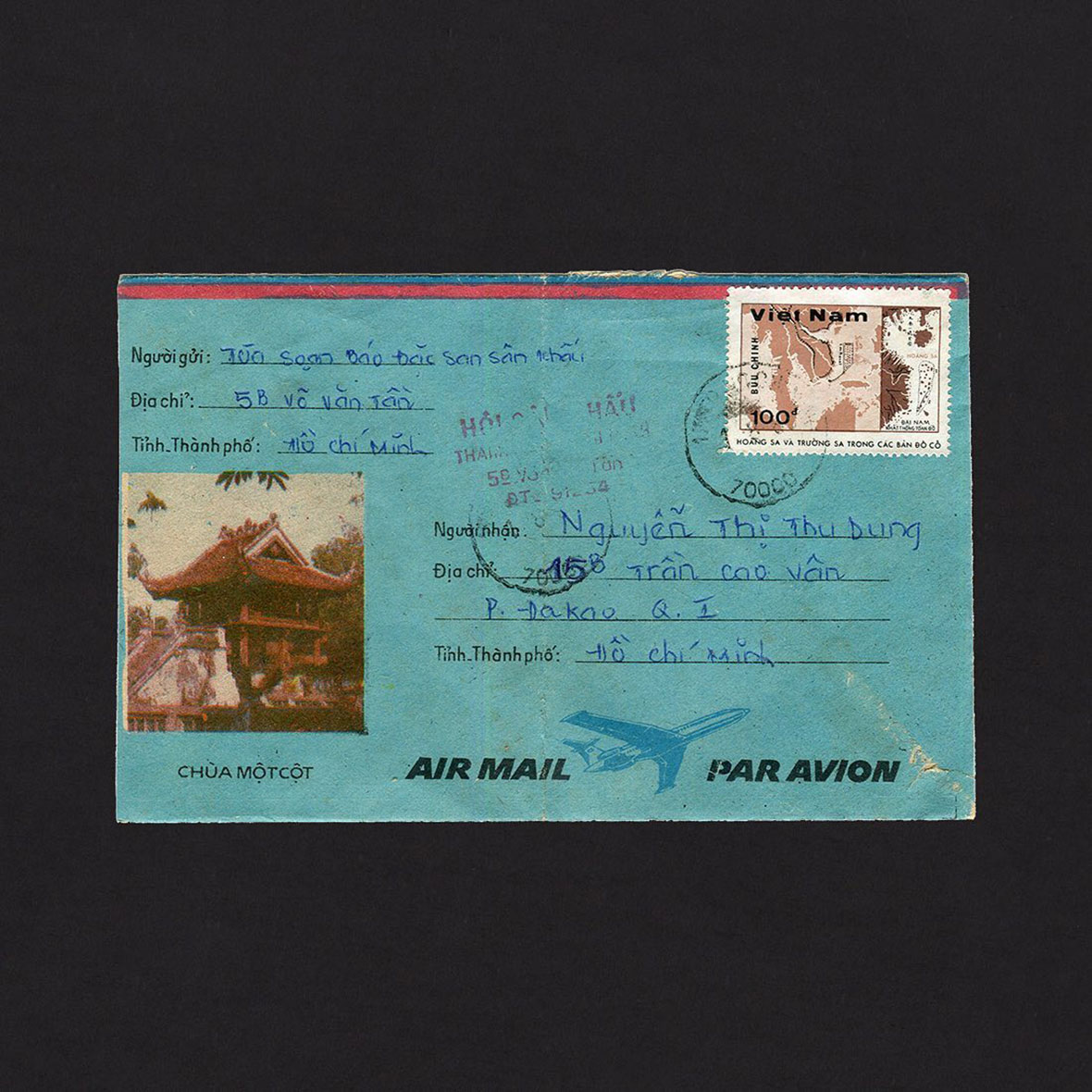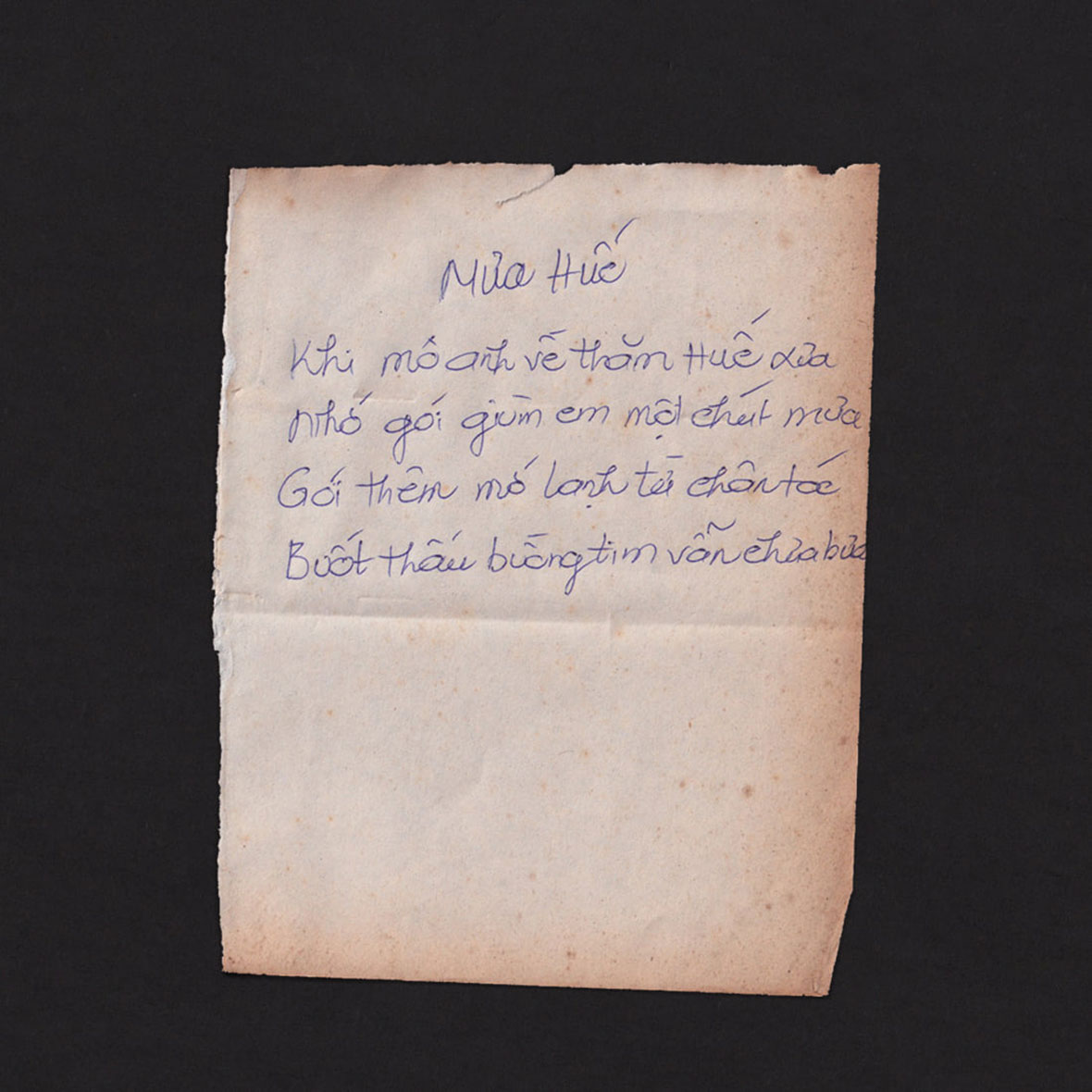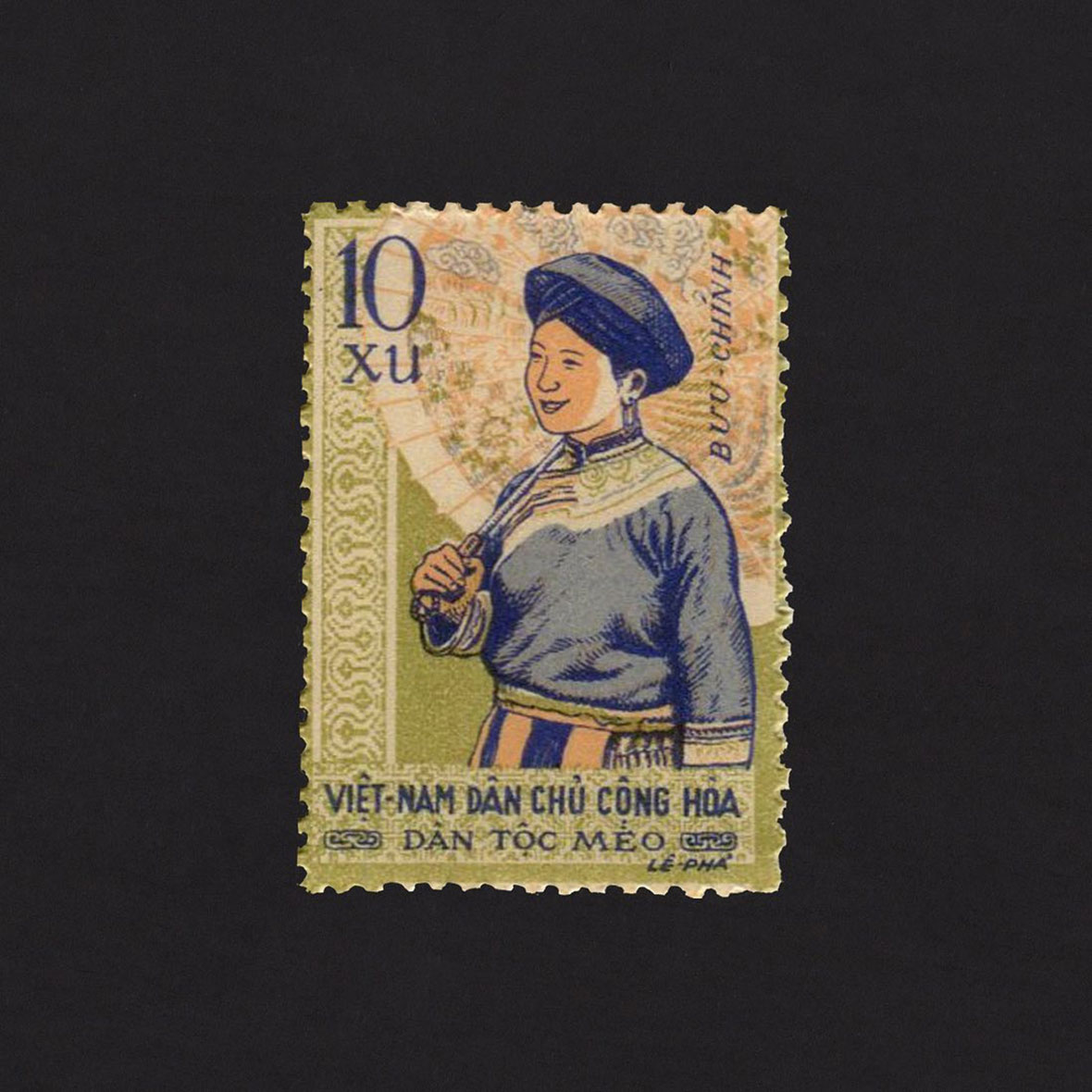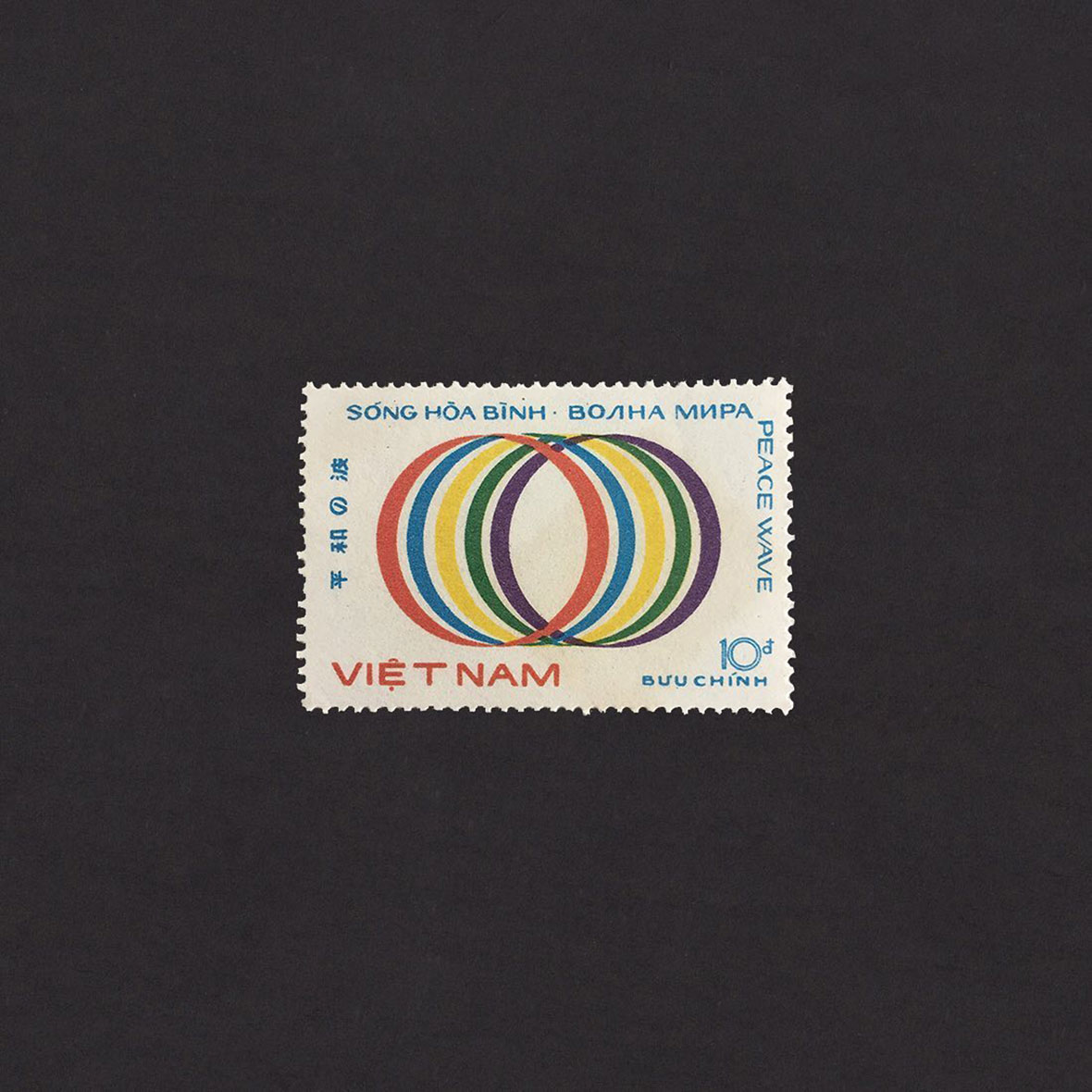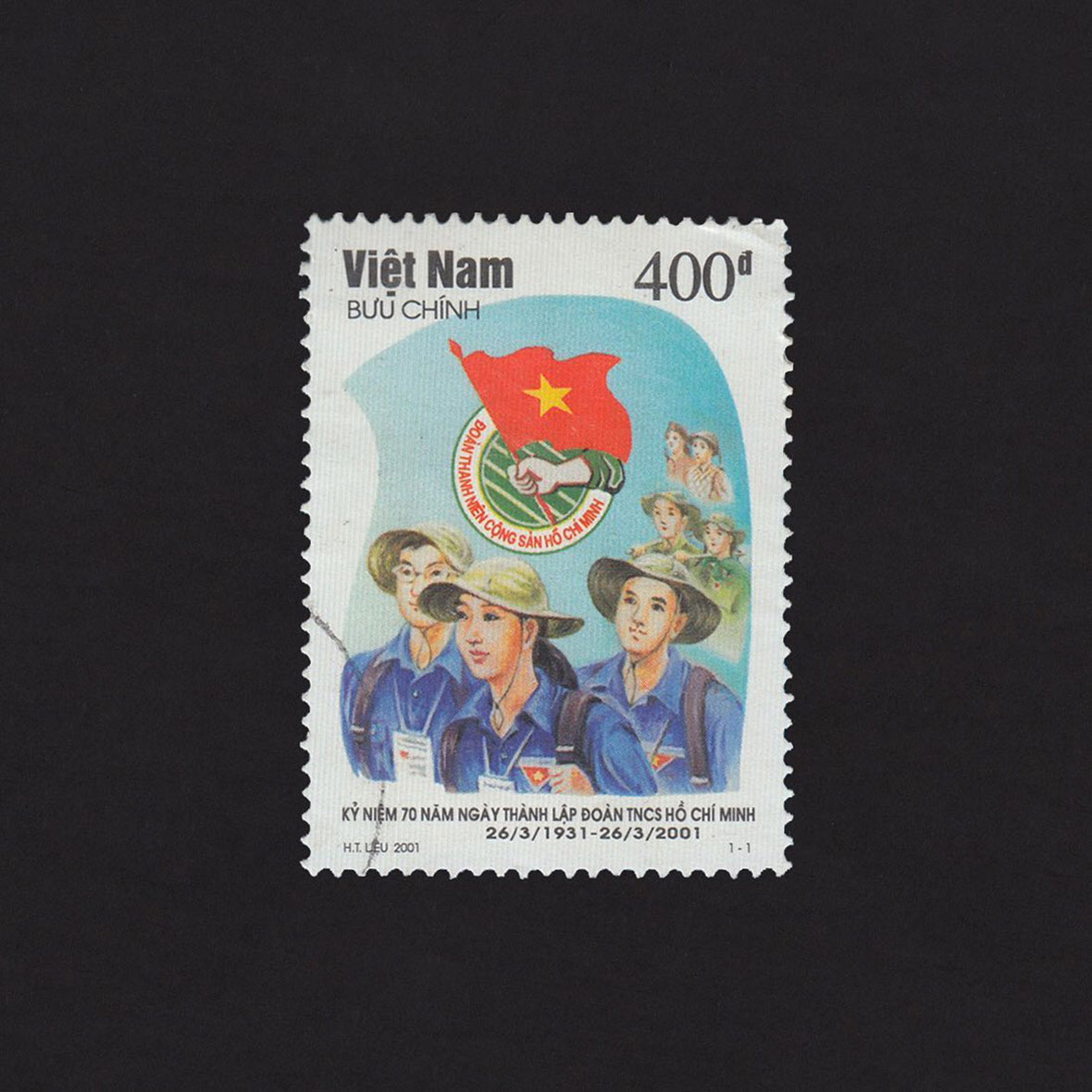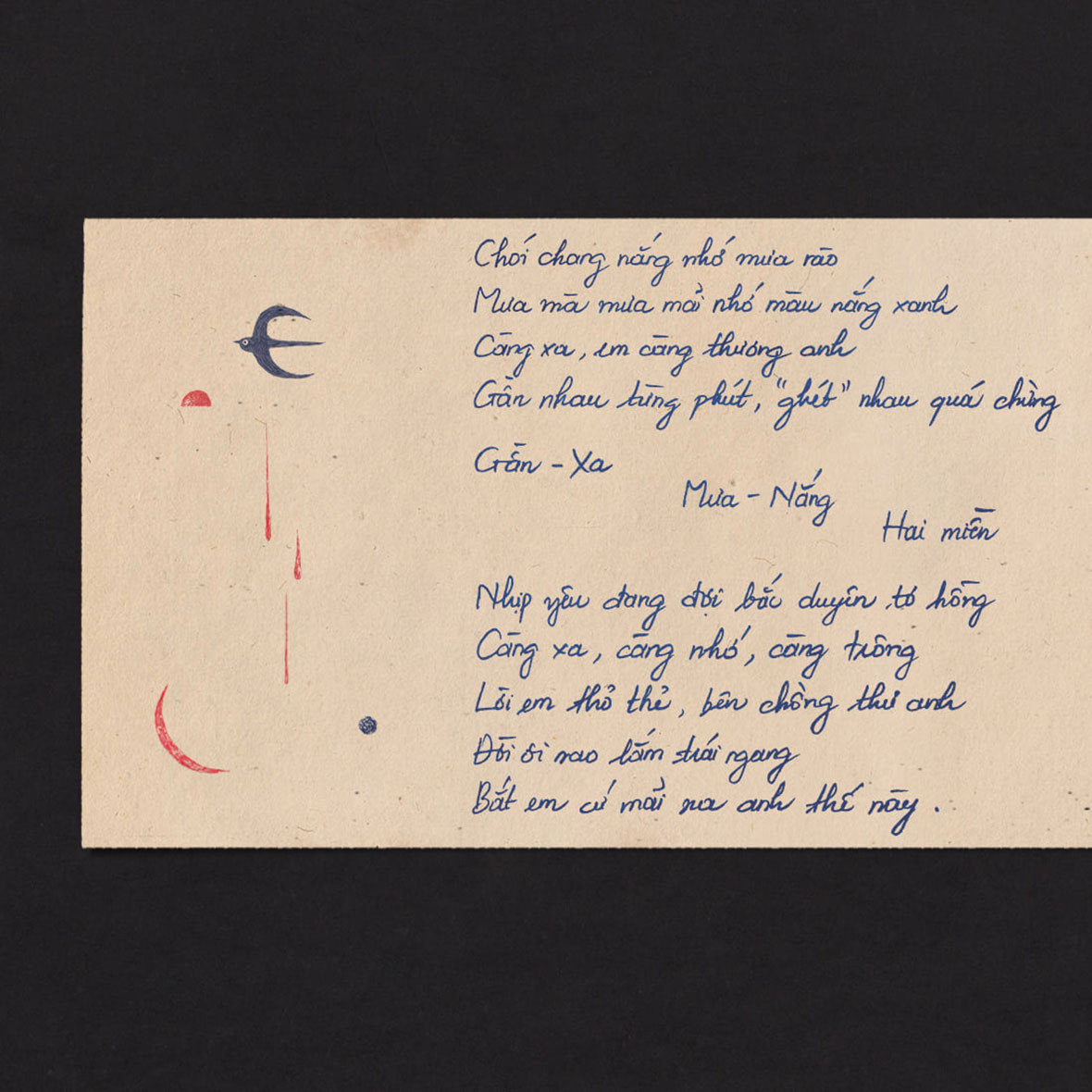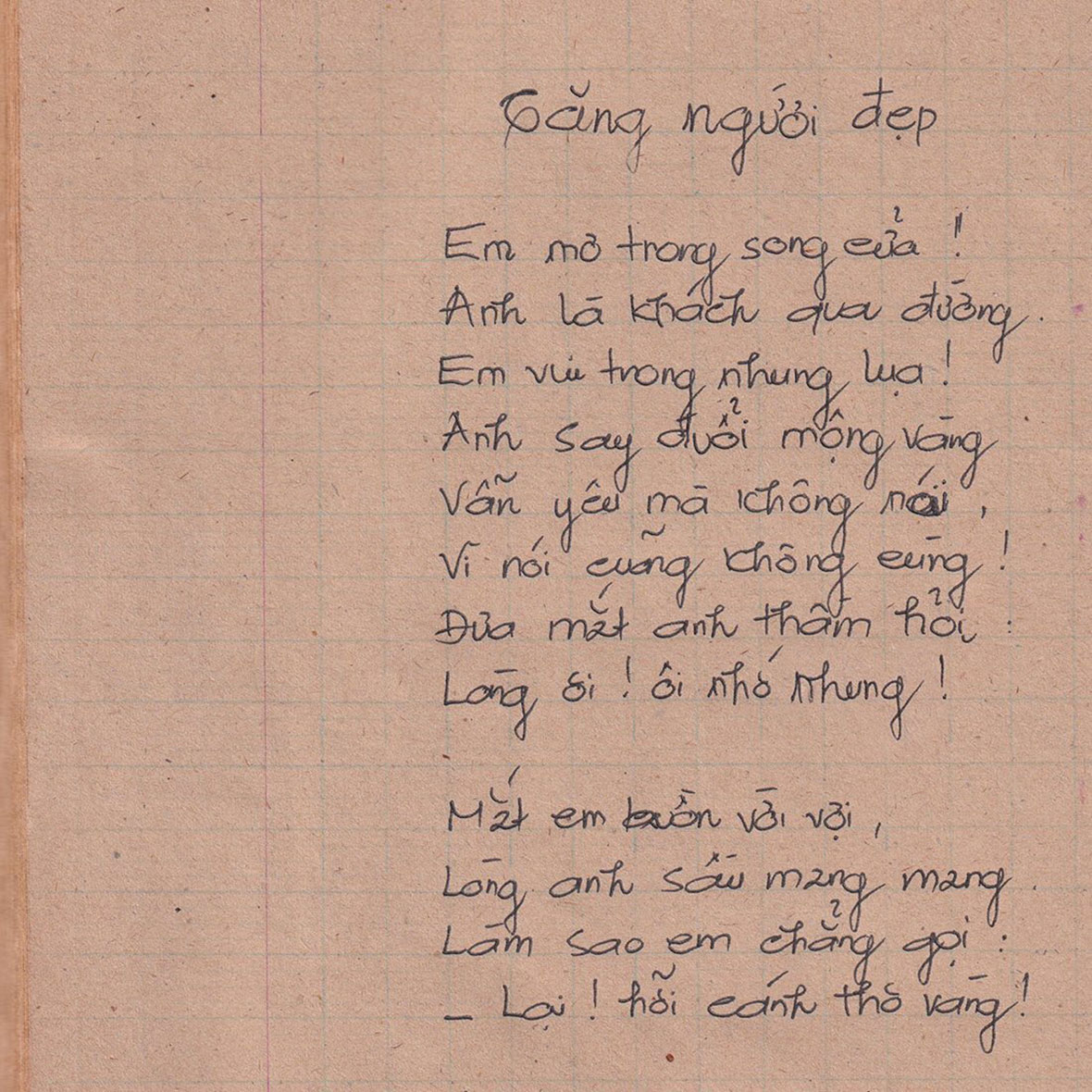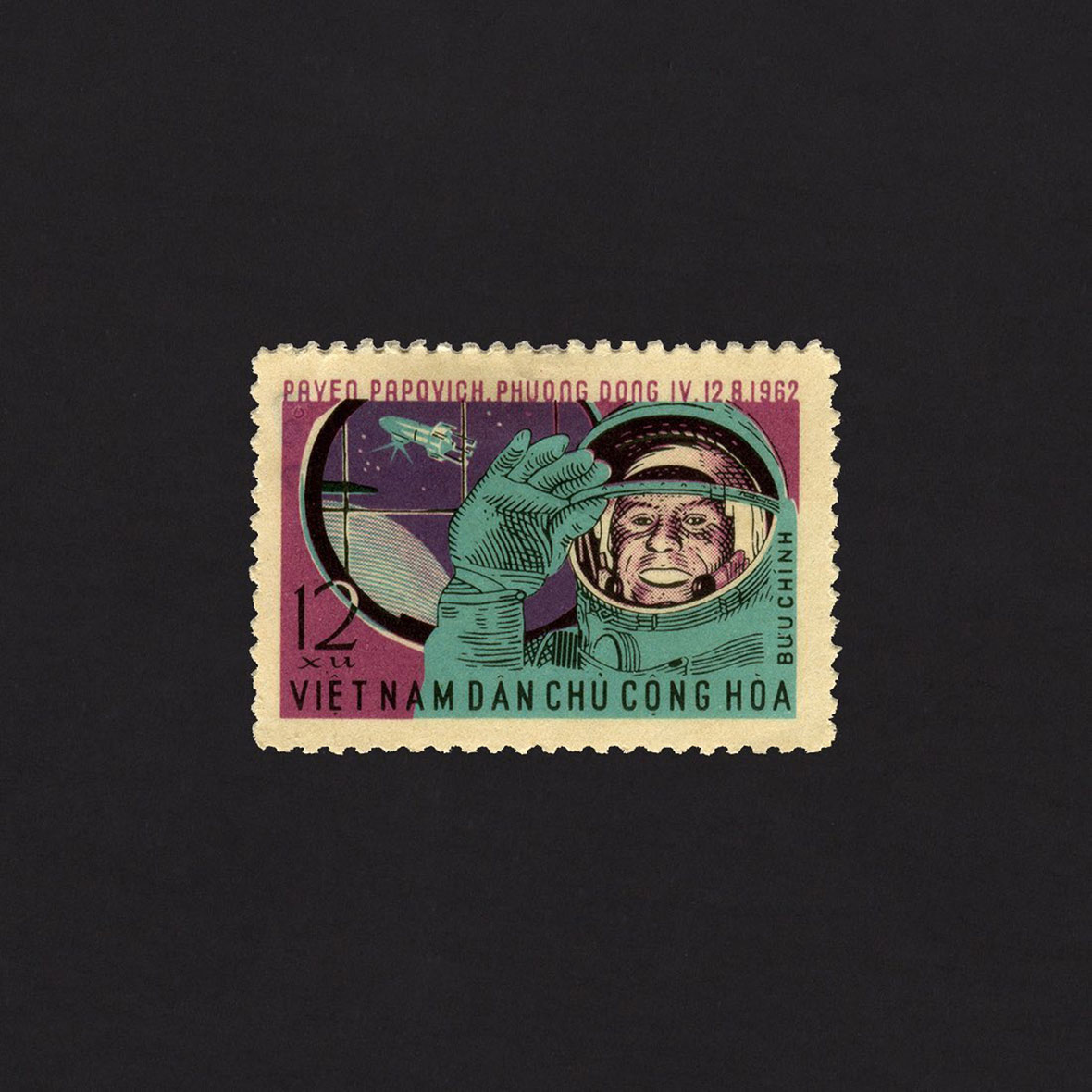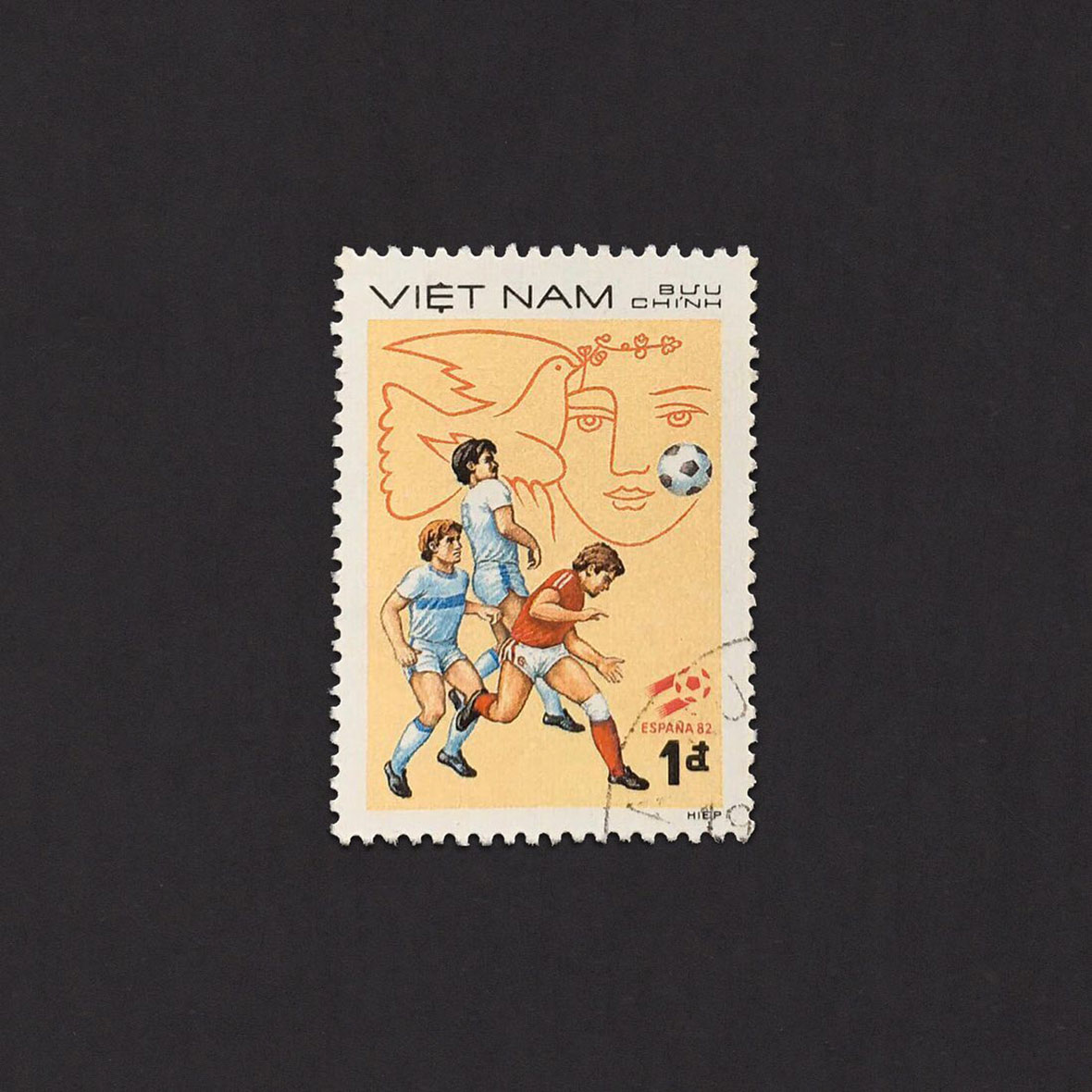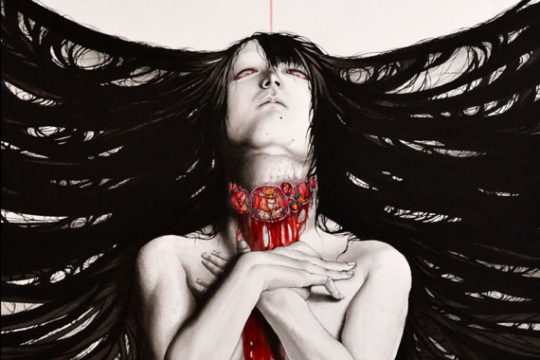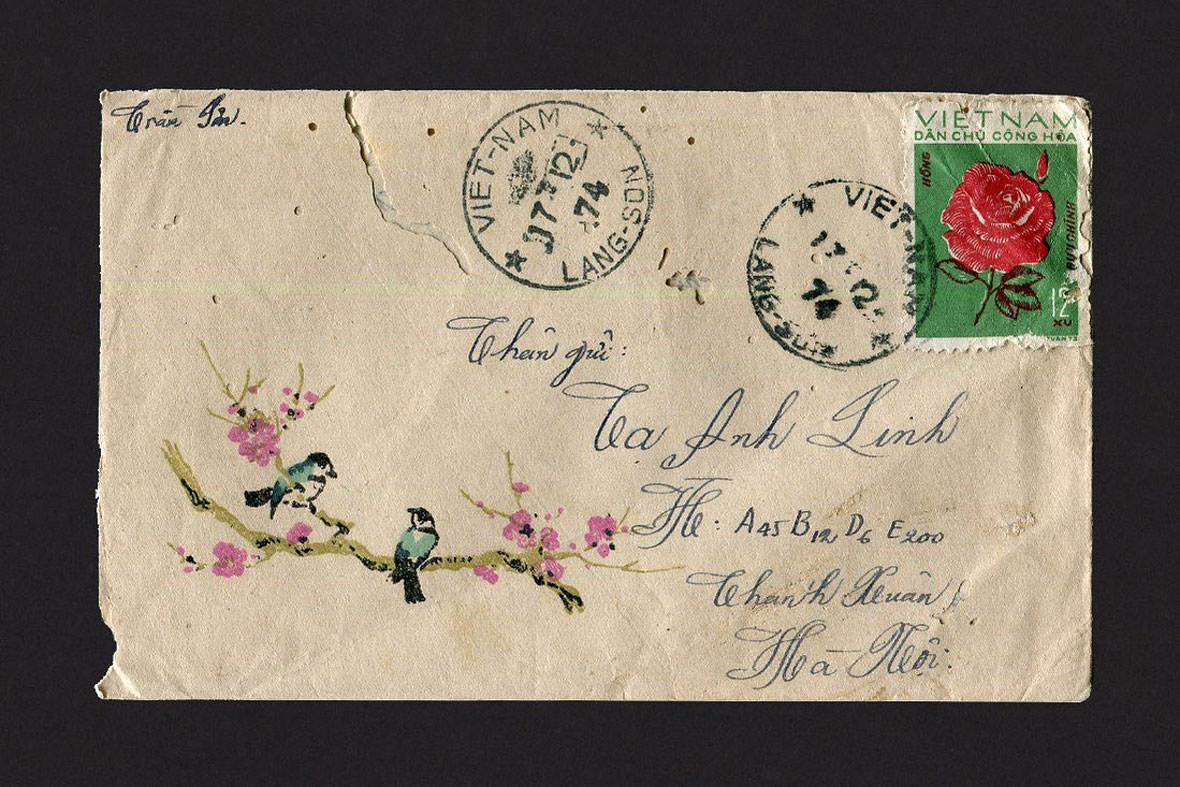
The art of communication is no longer what it once was.
Letter writing in particular can seem like an irrelevant medium, superseded by memes, emojis, and even Instagram stories. But in such an era, the sincerity of a handwritten letter can be that much more meaningful. There’s an unparalleled human warmth that comes with putting ink to paper, and there’s no way that it can be replaced by text scrolling by on a screen. Penned missives are particularly meaningful for Duc Luong, a Saigon-based illustrator who runs Buu Hoa, a project archiving old stamps and letters from Vietnam. “I believe that writing and sending letters is a sacred thing,” he says. “You breathe your stories, your emotions, and all that you want to say, into a blank piece of paper. You look at your own handwriting, which is your personal mark. You fold the letter, seal the envelope, paste the stamp, and finally send it to the post office. Every step is intimate and intricate.”
人与人之间的沟通方式已经今非昔比。写信似乎成为了一种不合时宜的方式,取而代之的是各种表情包、表情符号甚至是 Instagram 故事。然而也正是在这样的时代,手写信所蕴含的真挚情意却显得别具意义。当笔墨流淌于纸上,所流露出的人性温暖是在屏幕上滚动的文本所无法取代的。对于西贡插画家、越南旧邮票和信件档案馆 Buu Hoa(在越南语中意为邮票)创始人 Duc Luong 来说,用笔墨书写的信件有着特别的意义。他说:“我觉得写信和寄信是件神圣的事情。你可以将你的故事、你的情感,以及你想说的一切,都倾注在一张白纸之上。笔迹是属于你的个人标记,从折叠信件,密封信封,再粘贴邮票,到最后拿到邮局寄信,每一步都充满微妙复杂的亲密。”
Between 1955 and 1975, Vietnam was a war-torn country where families and close friends found themselves separated by the ongoing conflict; the only method of communication was often by writing letter. As a child, his parents and grandparents recounted the hardships in staying in contact with loved ones during that era. “Sadly, as I’ve grown up up, I’ve forgotten the details of these stories from the letters or my grandma,” he admits. “I’ve lost the magical innocence of being a child. Still, I know that their emotions are inside me, fueling every project I do, whether it’s Buu Hoa or my art.”
1955 至 1975 年间,越南饱受战争蹂躏,亲人和朋友因此隔绝、失散,而通常他们唯一的沟通方式就是写信。小时候,Duc 的父母和祖父母曾跟他讲述过那个时代亲人之间不堪的联络经历。他说:“长大后,我已经忘却这些故事。我失去了小时候对于写信那种纯真的向往。不过,故事的情绪一直牵动着我的内心,也在后来成为我的创作动力,促成了 Buu Hoa 和其他系列作品的创作。”
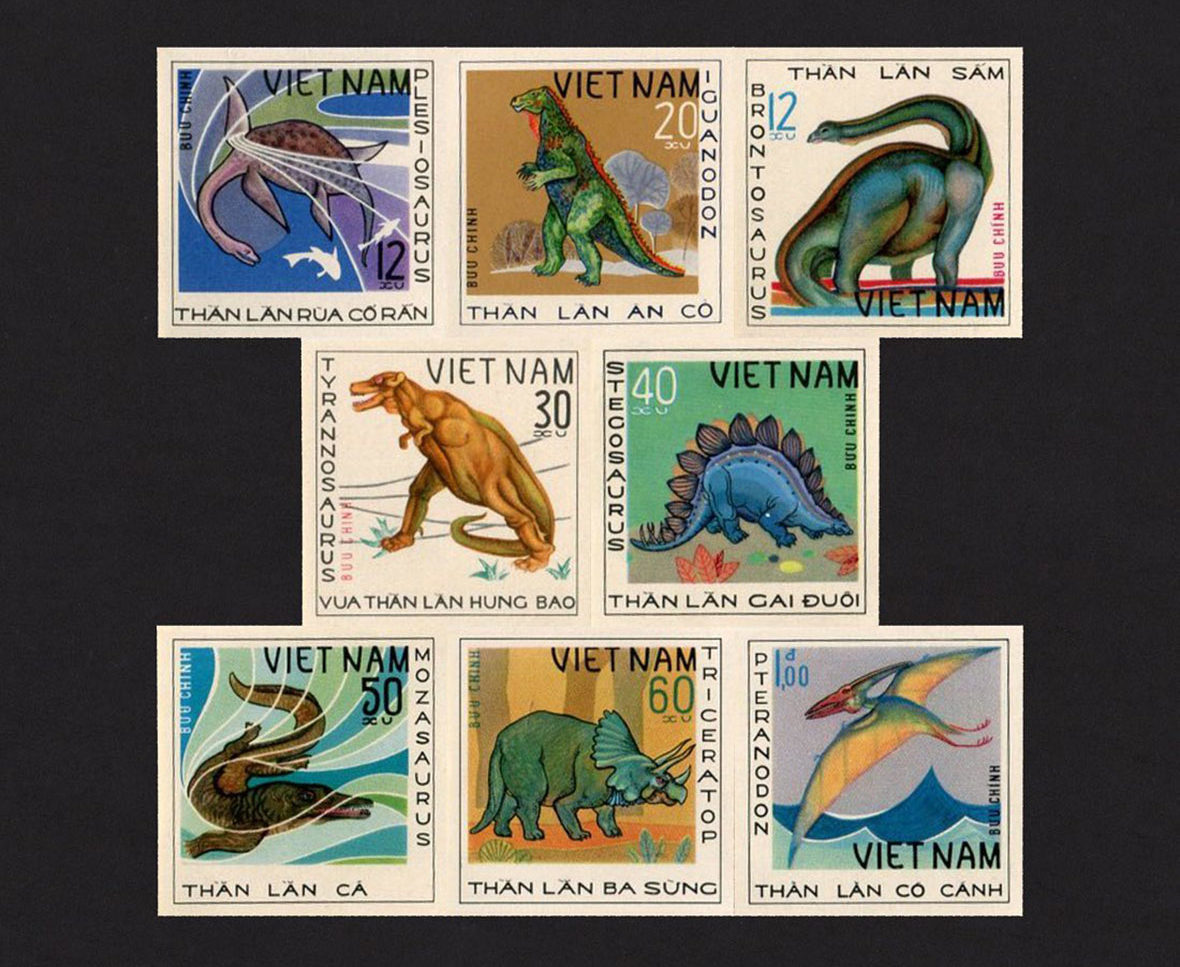
In fact, stamps ended up becoming Duc’s launchpad into the creative world. In 2015, when he visited his hometown of Hue with his parents, he became close with his uncle, a quirky hobbyist with an affinity for collecting labels, album covers, and stamps. “I told my uncle about my passion for drawing,” Duc recalls. “He smiled and nodded, and came back with a very special gift: an old box containing everything that he had collected over the last 30 years. Along with the box, my uncle said to me: ‘Maybe you can study from these stamps. Look at them, look at their harmonized colors and forms and emotions, all that an artist can put into a tiny little thing.’”
邮票后来成为 Duc 踏足创意领域的契机。2015 年,他随父母回到家乡顺化,与住在当地的叔叔来往亲密。叔叔是个性格古怪的收藏家,喜欢收集标签、专辑封面和邮票。Duc 回忆道:“我告诉叔叔我喜欢绘画,他微笑着对我表达赞许,随后递给我一份特别的礼品:那是一个旧盒子,里面装着他在过去 30 年里的收藏。他还对我说:‘邮票虽小,但内容不少。你快看,它们的色彩、形状和情感融洽地组合在一起。’”
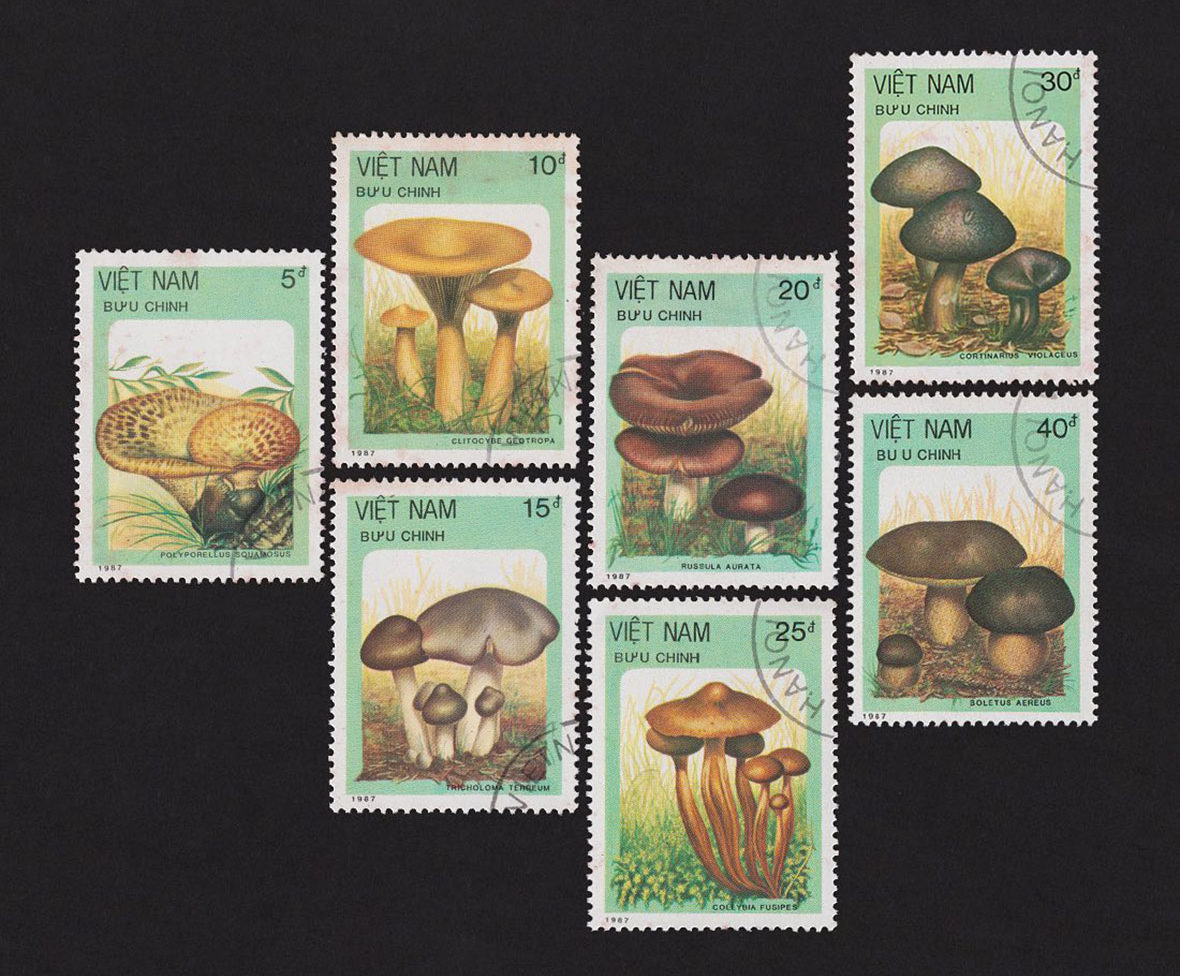
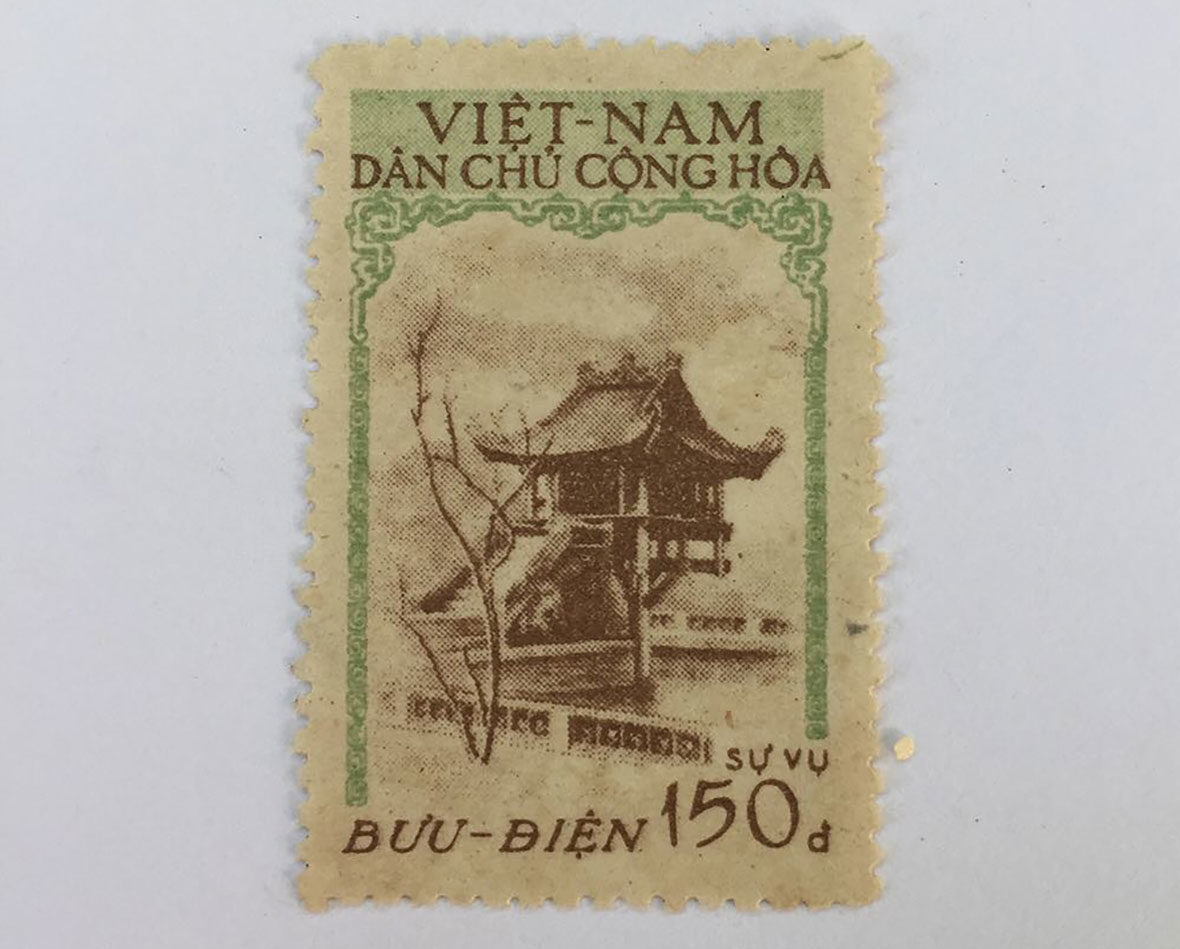
The vintage graphics of stamps captivated his imagination so much that he began collecting them himself. The idea that so much work and thought might’ve gone into one of these designs, only for them to eventually be forgotten and unseen by the world. The ephemerality of his collection is what makes each item incredibly meaningful for him.
When he first began the idea of putting together a stamp archive, he scoured antique markets in Saigon in search of interesting collectibles. The first stamp that he entered into his collection was from a stamp dealer. The stamp, titled “One Pillar Pagoda,” depicted a historic Buddhist temple in Hanoi and was released on December 22, 1957.
But even before buying this stamp, he often visited a stamp fair that was hosted weekly at the Fine Arts Museum in his city. He recalls the initial surprise of the vendors and visitors. “The participants were mostly seniors remembering past times and buying and selling stamp,” Duc says. “I remember their surprised reaction when they looked at me, a thin little young man, visiting every weekend and asking to photograph the beautiful stamps, as I didn’t have much money back then.”
复古邮票的图案令他深陷,很快也开始了自己的收集。每一张邮票的设计都埋藏着大量的深思熟虑,让人对于它们被世界的遗忘感到惋惜。对 Duc 来说,邮票的短暂性更令它们显得珍贵。
当有了建立邮票档案馆的想法后,Duc 前往西贡古董市场开始撒网式搜集。他所收藏的第一枚邮票来自一位邮票商人。这枚邮票名为“独柱寺”(One Pillar Pagoda),发行于 1957 年 12 月 22 日,描绘了河内一座历史久远的佛教寺庙。
在那之前,他还经常光顾当地的美术博物馆每周举办的邮票集会。他回忆起那里的摊主和访客看到他时流露出的惊讶神情:“参与者大多数都是老年人,他们回忆过去,手里的邮票仿佛是攥着过去的记忆,我这个毛头小子在现场实属罕见,不过我每个周末都会去。当时我没什么钱,所以只能在征求同意后拍下漂亮的邮票照片。”
On the other hand, the letters that Duc has begun collecting have been usually discovered by complete chance. He’s stumbled across scrap dealers or antique shops while out on an errand or looking for a place to eat, and there, these old letters lay in undisturbed piles, unread for years. “There, the letters lay in a corner, forgotten by the world, but I’m sure they must be waiting for me,” he says. “Time may pass, and the ink may fade, but a letter exists perpetually in the present.”
对于信件的收集,则带有一定的随机性。其中大多数收藏信件都是偶然发现,比如外出办事或找地方吃饭时偶然在废品店或旧货店里。旧信往往堆积在无人在意的角落,多年来一直未被开启。他说:“这些信就躺在角落里,被世界抛弃,但我觉得它们一定是在等待着某人的开启。时间会流逝,墨水会褪色,但信封却被永恒地保存下来。”
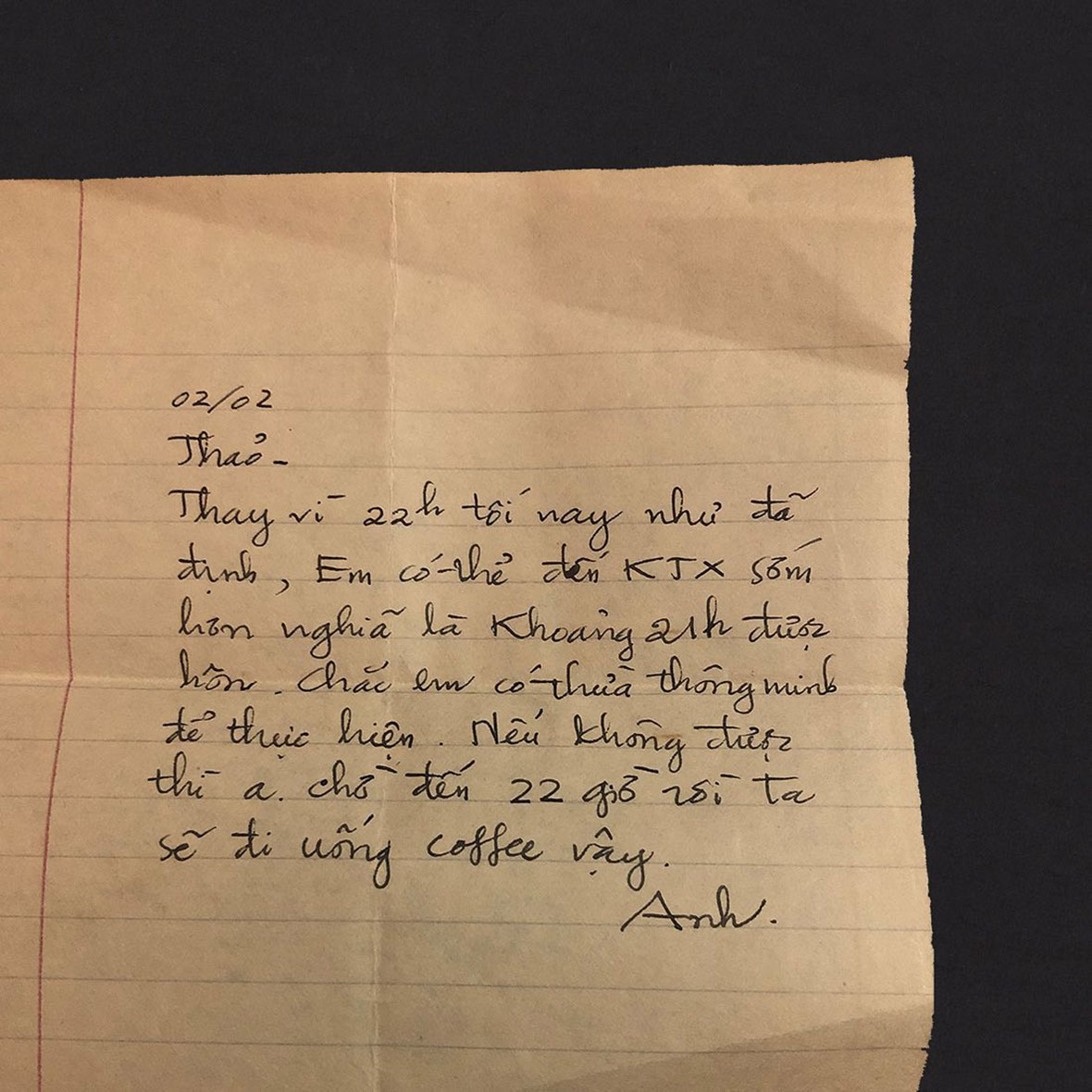
Of all the letters that Duc has featured in the project, his favorite is one sent from a boyfriend to a girlfriend detailing an upcoming scheduled date. “To sum it up, the man was to meet his girlfriend, Thao, at 22:00 in the evening, but he wanted her to come sooner,” he grins. “But if she couldn’t, then they would hang out at the expected time. He teased her in a loving way. I estimate that the letter was written after June 1978, based on the military stamp published at this time. The thing I love about this letter is that it reminds me of how different people communicated in the past. In our modern time, sending and receiving a text message via your phone is so simple. One second and it’s done. But back then, to even rearrange a date, a hand-written letter was needed. In a way, it is more personal, and even a small note is something to be remembered. And I wonder whether the couple did meet that distant evening.”
该项目中,Duc 最喜欢的一封信是一位男生寄给女友的信,信里详细描述了即将到来的一次约会。“写信的男生打算在晚上 10 点和女友见面,并希望她可以早点过来,”他笑着说道,“如不能提前到达,他们就按原定时间见面。在信里,男生以一种充满爱意的方式和女生逗趣。这封信大概是在 1978 年 6 月之后编写,封皮上的军用邮票大概也是在那个年代发行。现代社会,人们通过手机发送和接收短信非常简单,在一秒钟内就能完成。但在当时,如果要重新约定时间,还需要再写一封。这在某种程度上更个人化,即使是一张小小的便条也值得留念,也潜移默化地影响着人们对约定的执着。我很想知道,当年这对情侣在那个夜晚是否如愿会面。”
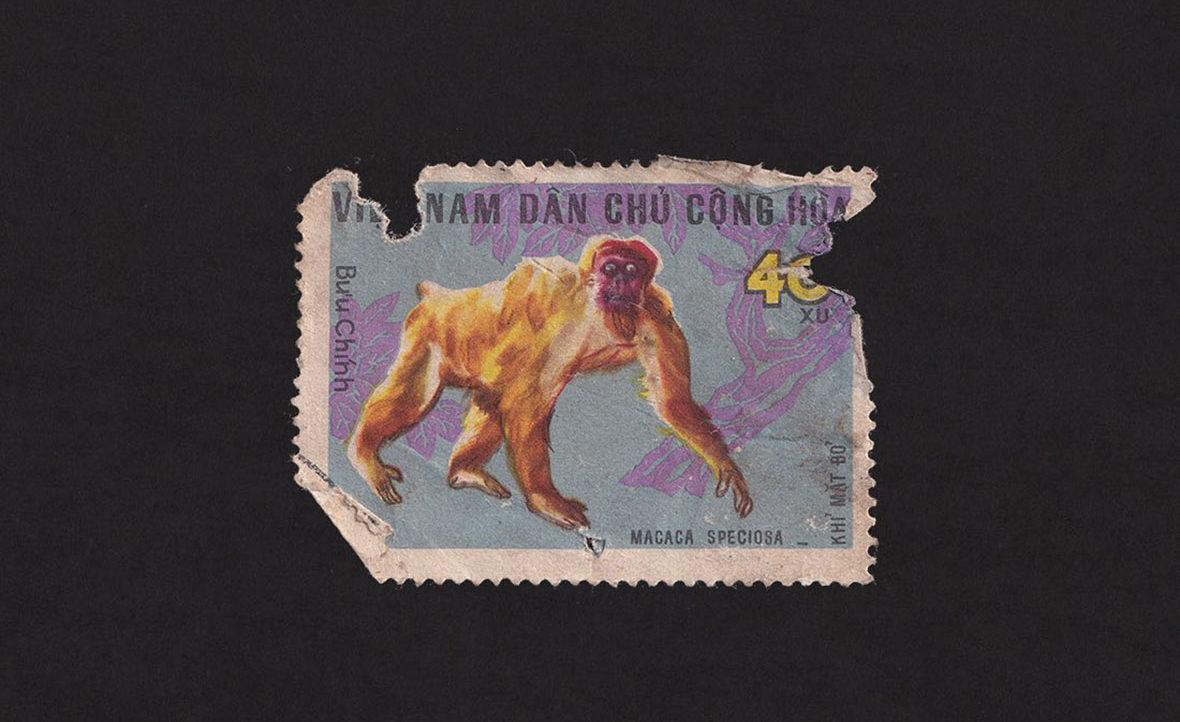
The project title Buu Hoa is a Sino-Vietnamese word that was widely used to reference postage stamps prior to 1975. “The previous generations lovingly used the word, and now remember it with nostalgia,” Duc explains. “Poetically speaking, ‘Buu Hoa’ is ‘The Flower on The Letter.'”
And like flowers, Duc acknowledges that the project must be tended to with care. Even though he’s occupied with a full-time job, he believes the past is worth preserving. “I know the beautiful flowers will grow, and it motivates me to continue forward,” he says. “Every moment of the present will become the past. And the past is irrecoverable, that’s what makes it so important. Each person’s part is different, and their memories and stories are totally unique, whether they choose to remember it or not.”
“Buu Hoa”是汉越混合词,在 1975 年之前被广泛用来指代邮票。Duc 解释说:“老一辈人很喜欢用这个词,现在说起来也充满怀念,很老派。‘Buu Hoa’的字面意思充满诗意,意思是‘信上之花’。”
而该项目也的确像鲜花一样,必须小心翼翼。虽然平时要忙于自己的全职工作,只有晚上才有时间,但他认为这些历史值得被保存。他认真地说道:“我知道这些美丽‘花朵’也许会在无人照料的情况下凋零,而这却激励着我坚持推进这个项目。现在的每一刻都会成为过去。过去不可挽回,这也正是它如此珍贵的原因。每个人的过去都有不同,无论他们是否选择记住,但都是独一无二的经历。”
Like our stories? Follow us on Facebook and Instagram.
Instagram: @buuhoavietnam
Contributor: David Yen
Chinese Translation: Olivia Li

